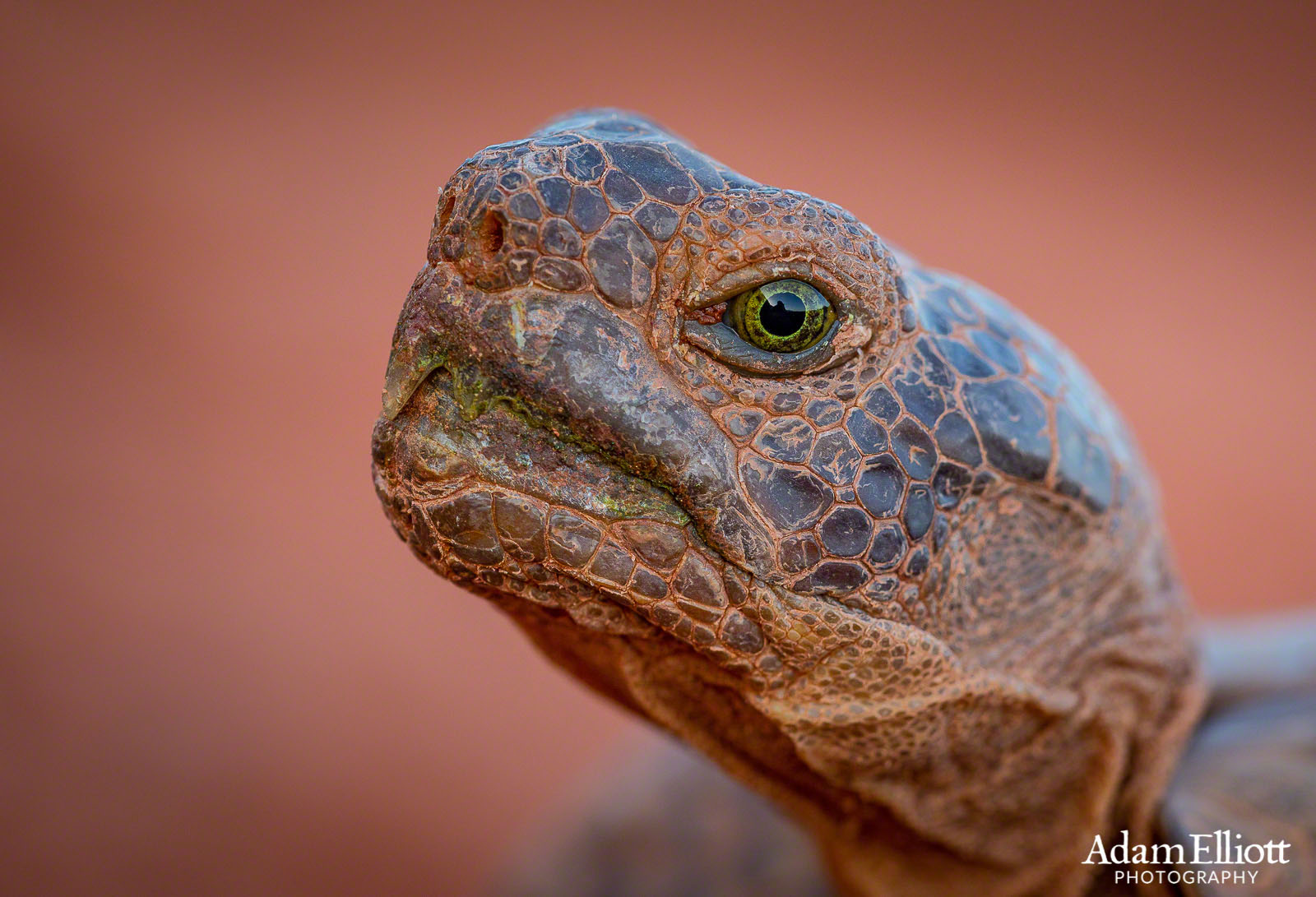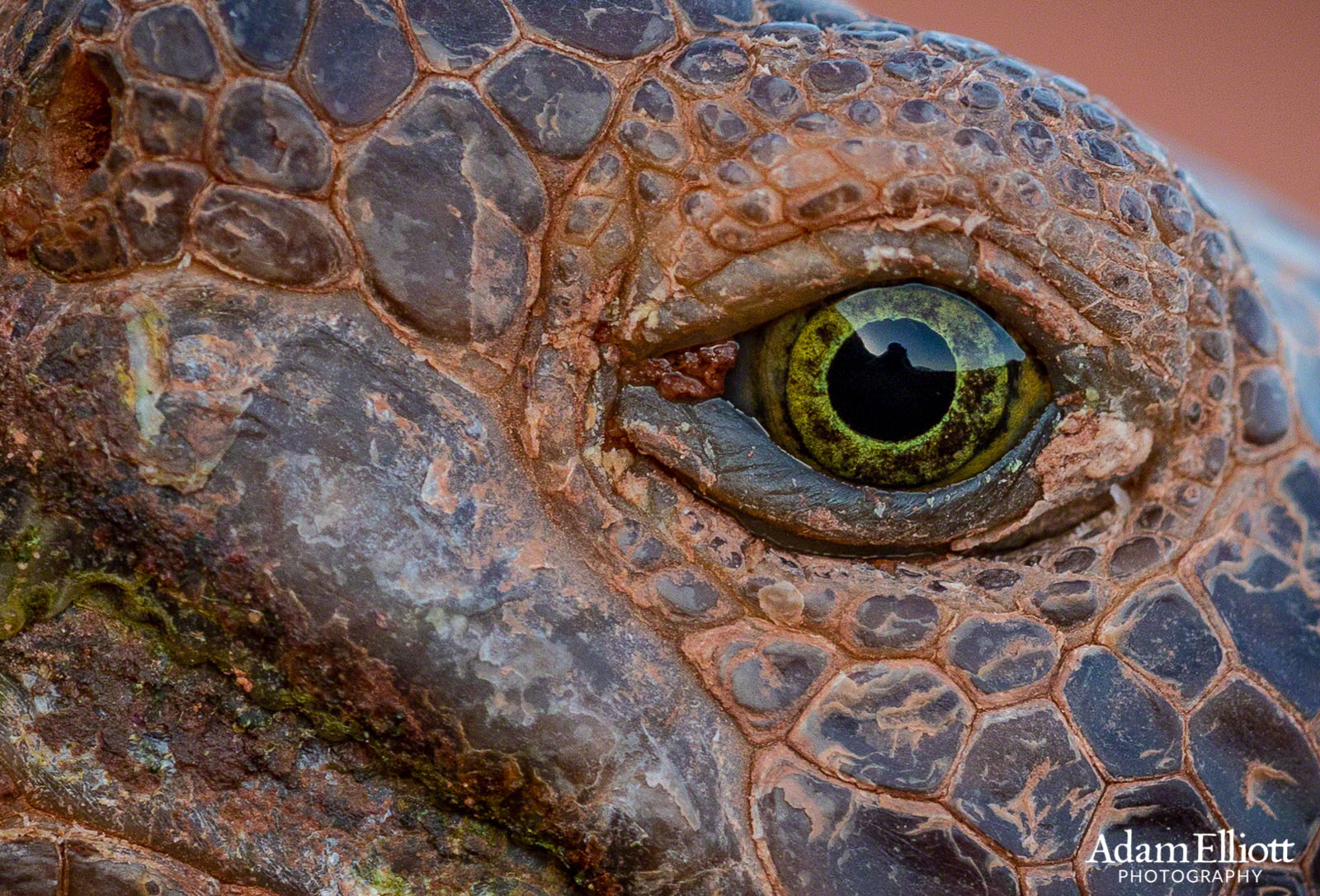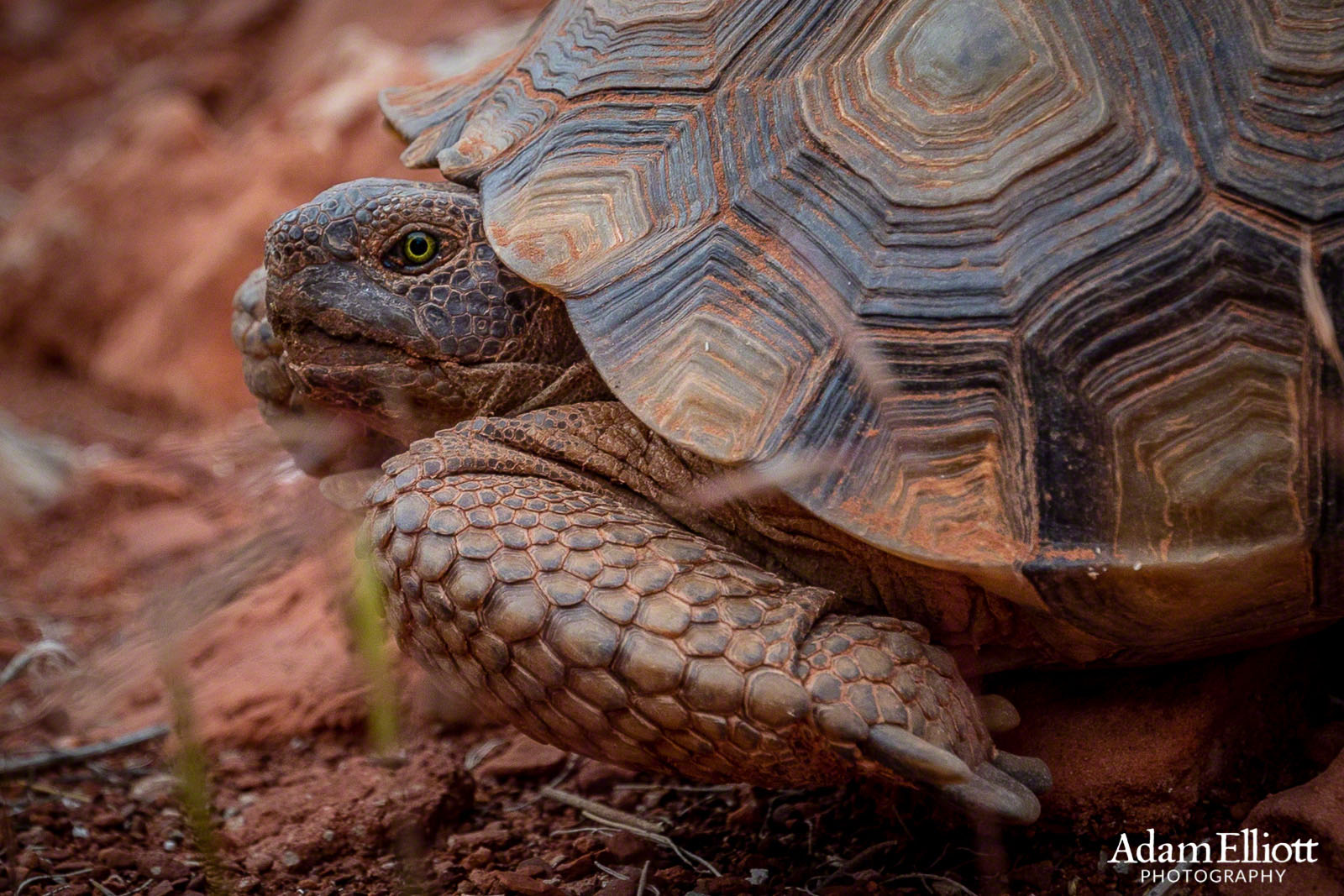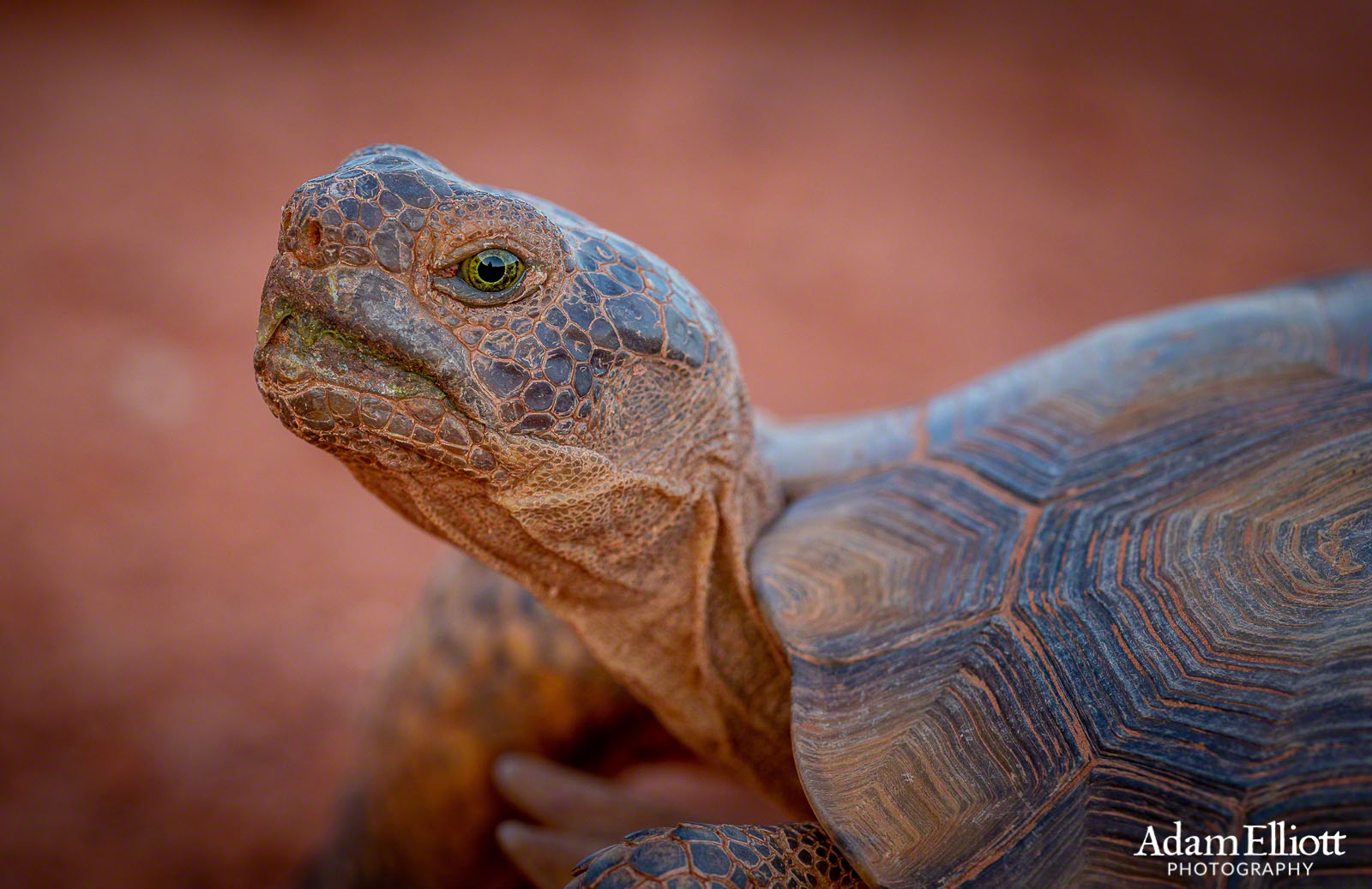The Mojave (Agassiz’s) Desert Tortoise
Categories: Wildlife
I’m lucky enough to live next to the threatened Red Cliffs Desert Reserve. The reserve, in southwestern Utah, covers a variety of beautiful terrain and contains a robust collection of desert animals. One of those is the threatened Mojave Desert Tortoise, also known more recently as the Agassiz Desert Tortoise. Due to cattle ranching, expanding cities, off road vehicle traffic and most recently a ballooning raven population the tortoise was listed as threatened by the end of the 1900’s. Then, in 2011 it was determined that the tortoises on the north and west sides of the Colorado River were actually a different species. This divided the population in half and resulted in two even more threatened species with the Agassiz Tortoise in Utah, Nevada and California, and the Morafka Tortoise in Arizona and Mexico.


The creatures are herbivores. I’ve seen them eat grass, flowers and leaves.

For print and purchase options
This image is currently available as a large print in the Arrowhead Gallery of St. George. It and any of the others can also be printed through my Smugmug account.


They have dinosaur skin. I barely caught this photo of one munching a leaf. It had been casually strolling by when it suddenly lunged at the leaf like it was catching an antelope.
The Agassiz Tortoise spends up to 90% of it’s life underground, so many people live near them their whole lives without seeing one. I have spent enough time in the reserve to notice when they are active and have managed to see about 12 of them, enough to start seeing the differences in individuals. This past spring they seemed more active than in past years and I managed to find them a couple of days when I had my longer lens.
The tortoises live about as long as a human but only 2-5% of them survive to adulthood. Part of the reason for this is it can take up to 5 years for their shells to harden enough for full protection from predators. In recent years, Ravens have figured out that they can peck through the shells of the baby tortoises.

If you do see a tortoise enjoy the sight, keep your pets away from it, and do not pick it up (unless it’s in danger in the roadway). Under stress the animal will release it’s bladder, which can result in death from dehydration later. The oils in your skin can also make the shell more vulnerable to parasitic fungi.



One day I came across this baby that was walking across the trail I was on. I had been walking for only a few minutes, so I ran back to my car and grabbed my camera even though I only had a wide angle lens that day. I was really surprised how far the little reptile had crawled by the time I got back. I almost didn’t find it because it didn’t leave any tracks. The other tortoises I’d encountered had easily tolerated my presence but I could tell the baby wasn’t going to get used to me, and I didn’t want to alert any birds, so I quickly left it alone.

Their eyes are an almost iridescent green.

After you see enough of them you will start to notice how individuals have unique shells.
